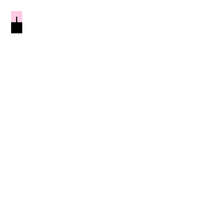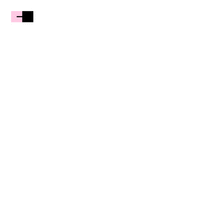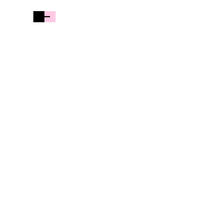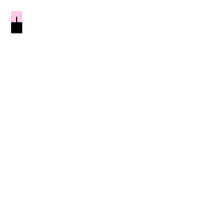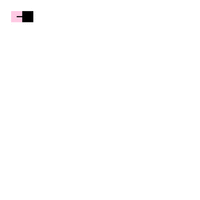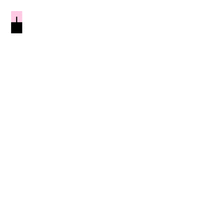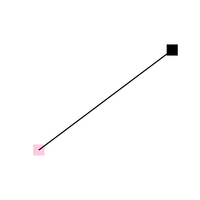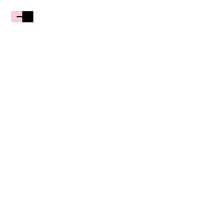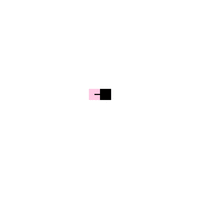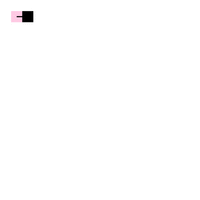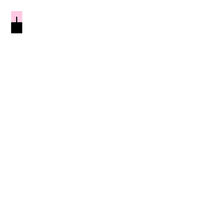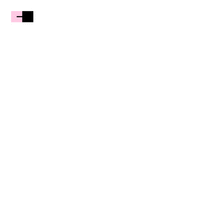{{pkg.description}}
Provides the altogether 25 following orderings (excluding symmetries) to generate grid coordinates, including iterators for shape rasterization, drawing, clipping, filling, processing in general:
Also see the filtered version
columnEnds2d(),
which only includes the end points of each column.
Also see the filtered version
diagonalEnds2d(),
which only includes the end points of the diagonals.
Supports custom strides... example uses step = 4
Supports custom strides... example uses step = 4
Supports custom PRNG implementations via IRandom interface defined in
@thi.ng/random
Also see the filtered version
rowEnds2d(),
which only includes the end points of each row.
Some functions have been ported from Christopher Kulla's Java-based Sunflow renderer.
For more basic 2D/3D grid iteration, also see range2d() & range3d()
in
@thi.ng/transducers.
All of the above mentioned grid iterators support point (grid coordinate)
transformations to create variations of their base orderings. The package
provides the flipX, flipY and flipXY preset transforms to mirror one or
both axes, but custom transforms can be easily implemented via the same
underlying mechanism. These transforms can be specified via the tx option
passed to the iterators (see code example further below).
The floodFill() iterator can be used to iterate arbitrary 2D grids using an
user-provided predicate function. The function recursively explores (in a
row-major manner) the space in the [0,0]..(width,height) interval, starting at
given x,y and continues as long given predicate function returns a truthy
value. Any eligible 90-degree connected regions will be found and iterated
recursively. The predicate function is used to select eligible grid cells
(e.g. "pixels" of sorts).
import { floodFill } from "@thi.ng/grid-iterators";
// source "image"
const img = [
"█", " ", " ", " ", "█",
"█", " ", "█", " ", " ",
" ", " ", "█", " ", "█",
" ", "█", "█", " ", " ",
" ", " ", " ", "█", "█",
];
// flood fill iterator from point (1,0)
// only accept " " as source pixel value
// image size is 5x5
const region = floodFill((x, y) => img[x + y * 5] === " ", 1, 0, 5, 5);
// label filled pixels using increasing ASCII values
let ascii = 65; // "A"
for(let [x,y] of region) img[x + y * 5] = String.fromCharCode(ascii++);
// result image showing fill order
img
// [
// "█", "A", "B", "C", "█",
// "█", "I", "█", "D", "E",
// "K", "J", "█", "F", "█",
// "L", "█", "█", "G", "H",
// "M", "N", "O", "█", "█"
// ]Additionally, the following shape iterators are available, all also with optional clipping:
{{meta.status}}
{{repo.supportPackages}}
{{repo.relatedPackages}}
{{meta.blogPosts}}
{{pkg.install}}
{{pkg.size}}
{{pkg.deps}}
{{repo.examples}}
{{pkg.docs}}
import * as gi from "@thi.ng/grid-iterators";
[...gi.zigzagRows2d({ cols: 4, rows: 4 })]
// [
// [ 0, 0 ], [ 1, 0 ], [ 2, 0 ], [ 3, 0 ],
// [ 3, 1 ], [ 2, 1 ], [ 1, 1 ], [ 0, 1 ],
// [ 0, 2 ], [ 1, 2 ], [ 2, 2 ], [ 3, 2 ],
// [ 3, 3 ], [ 2, 3 ], [ 1, 3 ], [ 0, 3 ]
// ]
// with applied horizontal mirroring
// also, if `rows` is missing, it defaults to same value as `cols`
[...gi.zigzagRows2d({ cols: 4, tx: gi.flipX })]
// [
// [ 3, 0 ], [ 2, 0 ], [ 1, 0 ], [ 0, 0 ],
// [ 0, 1 ], [ 1, 1 ], [ 2, 1 ], [ 3, 1 ],
// [ 3, 2 ], [ 2, 2 ], [ 1, 2 ], [ 0, 2 ],
// [ 0, 3 ], [ 1, 3 ], [ 2, 3 ], [ 3, 3 ]
// ]